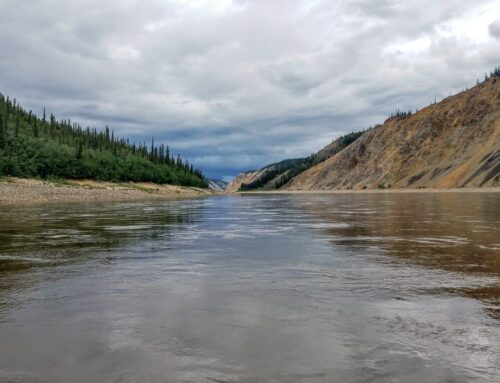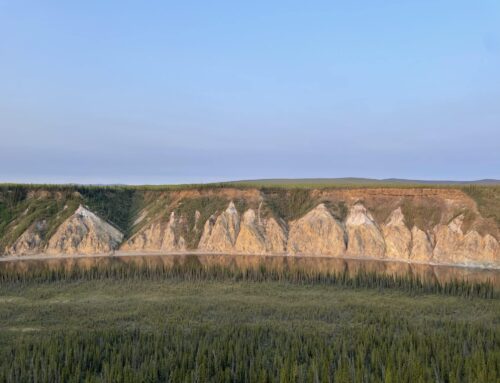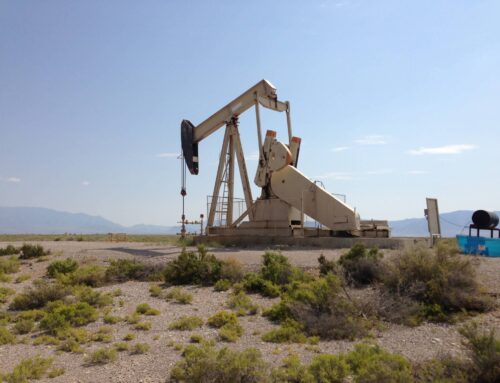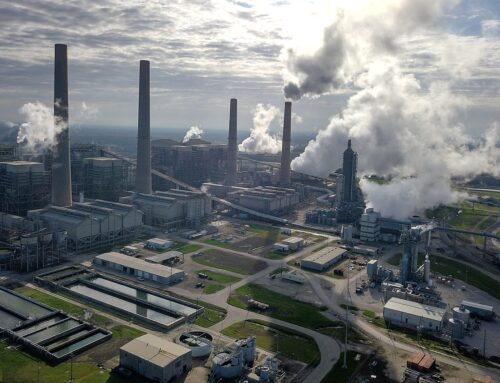Bureau of Land Management Alaska officials continue working towards auctioning off oil and gas leases in the coastal plain of the Arctic National Wildlife Refuge ahead of the administration change amid pushback from some opponents who claim it is a political move that doesn’t make economic sense.
The agency this week announced a 30-day solicitation period that started Nov. 17 for companies to nominate tracts for inclusion in an upcoming coastal plain lease sale and provide broader comment on what the tracts that may be available in a future sale.
In Nov. 16 statements, the members of Alaska’s all-Republican congressional delegation characterized the solicitation as getting “one step closer” to holding a lease sale in the coastal plain, which could happen as soon as January, according to Sen. Lisa Murkowski.
“While we face headwinds, from global economic conditions to an organized effort to prevent leasing, the (Interior) Department’s rigorous environmental review has provided a solid framework to ensure responsible exploration and development,” Murkowski said.
Sen. Dan Sullivan said a coastal plain lease sale would go a long way towards solidifying the progress the delegation and Trump administration have made for Alaska’s economic future since 2017.
“This development could mean thousands of jobs for hard working Alaskans and hundreds of thousands of barrels of in daily (Trans-Alaska) pipeline throughput,” Sullivan said. “I applaud Secretary Bernhardt and the Interior Department for faithfully implementing the law we passed in 2017 and moving us one step closer to responsibly developing the 1002 area.”
The roughly 1.5 million-acre ANWR coastal plain has been dubbed by many the “1002 area” in reference to Section 1002 of the 1980 Alaska National Interest Lands Conservation Act that grew the refuge but also explicitly left the door open for oil and gas exploration on the coastal plain if it was subsequently approved by Congress.
ANWR is approximately 19 million acres in total.
That approval came in late 2017 via a rider to the Tax Cut and Jobs Act.
BLM Alaska Director Chad Padgett, a former staffer to Rep. Don Young, said the call for nominations moves the agency closer to satisfying the directive from Congress to hold the sale and advancing “this administration’s policy of energy independence.”
The tax bill requires the Interior Department to hold two lease sales over seven years — the first of which will offer at least 400,000 acres — and allows for up to 2,000 acres of total surface development on federal refuge lands.
Further development could occur on private ANWR in-holdings largely held by Alaska Native corporations around the village of Kaktovik. BLM officials have separated the coastal plain into 36 tracts that could potentially be available for leasing.
The Gwich’in Steering Committee, a group of leaders from Interior Alaska Native villages, and a coalition of conservation groups sued Interior Secretary Bernhardt and sub-agencies of the department Aug. 24 in part for failing to consider the cumulative impacts of development in the environmental review of the lease sale that was signed Aug. 17 by Bernhardt.
The Tribal governments of the communities of Arctic Village and Venetie also sued Interior Sept. 9, alleging agency officials ignored the impact that disruption of the Porcupine caribou herd, which calves on portions of the coastal plain, could have on residents of the villages that are outside of the immediate development area.
The attorneys general of 15 states took their shot at Interior as well Sept. 8, filing a joint lawsuit to stop the leasing program. The states — from across the country — contend the Trump administration did not analyze a sufficient range of leasing alternatives in its review and, among other things, did not consider the contribution the oil produced from the coastal plain could have on the climate.
Those lawsuits remain unresolved.
The U.S. Geological Survey estimates more than 10 billion barrels of technically recoverable oil could be available beneath the coastal plain, but how much interest the industry will have in the remote and politically contentious area is a true unknown.
That is in part due to the fact that President-elect Joe Biden has long opposed drilling in the coastal plain and, as Murkowski acknowledged, the fact that the oil and gas industry has been among the hardest hit sectors by the pandemic.
Alaska Oil and Gas Association CEO Kara Moriarty said in an interview that the group is concerned about the policies that could come from the incoming administration, which Biden has made clear will make addressing climate change a top priority, but the industry stands ready to work with federal agencies and the White House to find a balance between development and conservation measures.
“There’s always a way for an administration to slow things down; we’ve seen it before and we can see it again,” Moriarty said, adding that the ability of the Biden administration to achieve major legislative changes to the nation’s energy policy — including reversing the lease sale rider — was dampened by Republicans maintaining slim control of the Senate pending two Georgia Senate runoff elections to be held in January.
If the nomination period is part of a politically-motivated push by the Trump administration to hold the sale in the remaining days of President Donald Trump’s term as conservation groups claim, BLM officials have left themselves a tight window in which to make it all happen.
According to BLM, the agency will issue a Notice of Sale in the Federal Register announcing a sale date following a review of the nomination comments. The sale notice will be published at least 30 days before the sealed bid auction is held. That leaves at most just a handful of days for the agency to hold a lease sale while adhering to regulatory timelines prior to Inauguration Day Jan. 20, 2021.
BLM Alaska spokeswoman Lesli Ellis-Wouters wrote via email that the amount of time it will take for agency staff to evaluate the nominations and prepare the sale notice will depend on the volume of nominations and comments that are received.
Autumn Hannah, vice president of the Washington, D.C.-based Taxpayers for Common Sense, said in an interview that the fiscal watchdog group opposes leasing the coastal plain not for concerns about the environmental health of the area but for concerns about the health of the federal budget.
Hannah insists using the lease sale rider as a “revenue raiser” for the tax bill was disingenuous from the start as it was first predicted to generate roughly $900 million to offset tax cuts predicted to grow the federal deficit by approximately $1.4 trillion.
Taxpayers for Common Sense instead believes the lease sale will generate about $15 million in federal revenue based on average bids for — often more explored — nearby state acreage compiled in a report published by the group in September titled, “Drilling in the Arctic: Broken Revenue Promises in ANWR.”
The State of Alaska is entitled to half of the nearly $30 million in lease revenue Taxpayer’s report estimates will spend.
“Over the last 20 years, oil and gas companies leased 12 million acres on Alaska’s North Slope, or seven times the acreage of the entire ANWR coastal plain — 1.56 million acres,” the report states. “These leases generated a total of $489 million in bids — roughly a quarter of the projected revenues for the (two) planned ANWR sales.”
Hannah emphasized that the Interior Department needs to be strategic in how it leases federal lands for resource development and going through the work to lease a politically charged area for oil exploration while oil markets are down roughly 40 percent from near-term averages is not that, she said.
“I think this administration has made it clear they are working with industry with little attention to taxpayer interest,” Hannah said. “We’re concerned about overall leasing prospects in a pandemic. This is not exclusive to Alaska.”
Alaska oil industry observers and insiders have repeatedly said it is nearly impossible to forecast the level of interest companies will have in the coastal plain given the myriad of factors at play but it is likely the National Petroleum Reserve-Alaska to the west — where ConocoPhillips has multiple large prospects in varying stages of development — will garner more interest in forthcoming lease auctions.
Moriarty said that the near-term political and economic climates can overshadow the long-term reality of remote exploration and development on the North Slope.
“Even if Mr. Biden wins reelection four years from now production from the coastal plain wouldn’t start until after he is out of office eight years from now,” Moriarty said.











Get Social